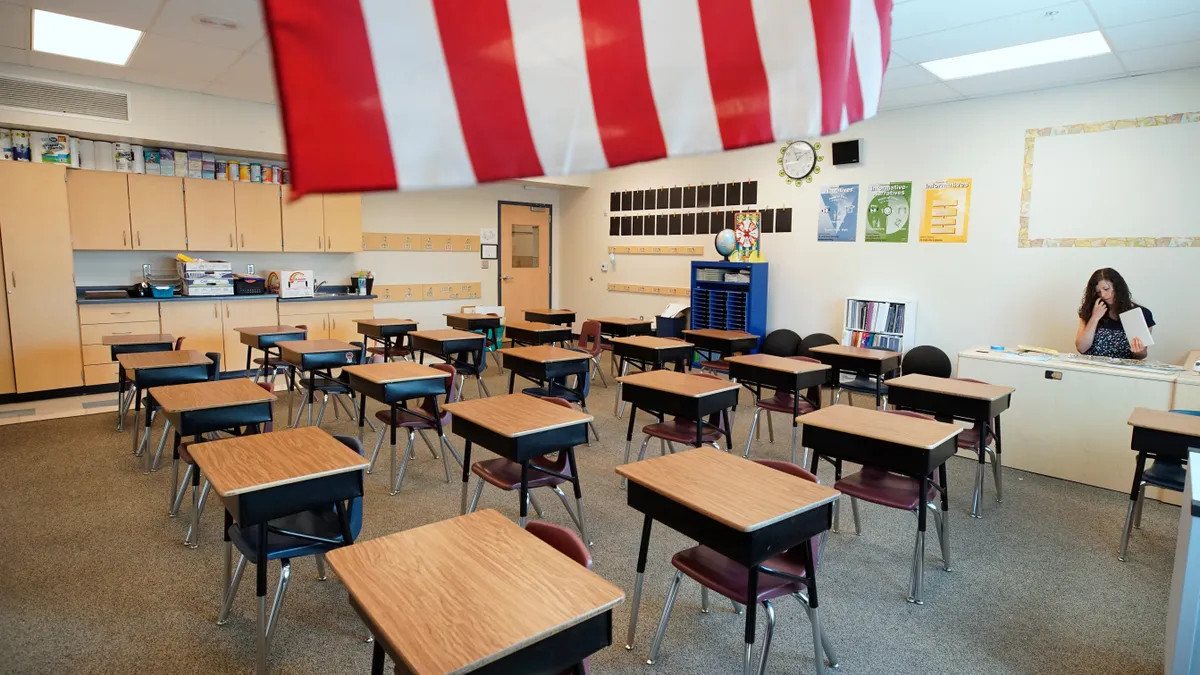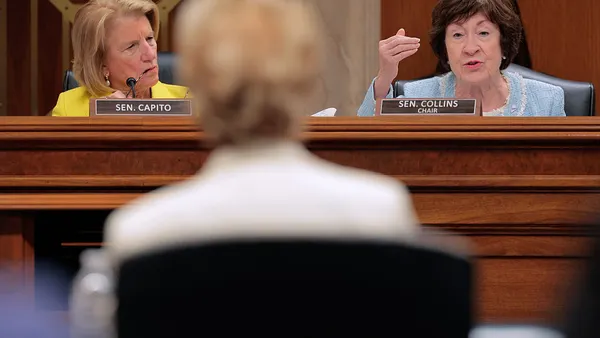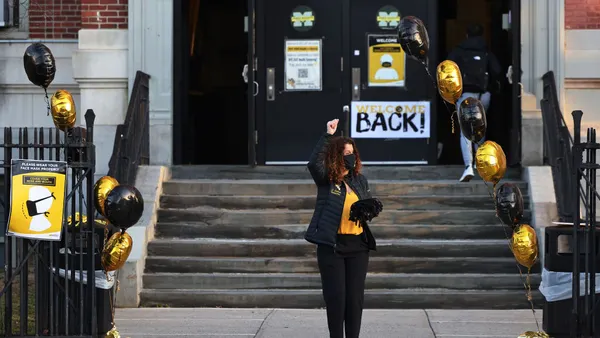Dive Brief:
- In 2020 and 2021, 894 school districts representing 35% of all K-12 students were impacted by local actions related to campaigns against critical race theory in classrooms, according to a new study by researchers from the University of California, Los Angeles and the University of California, San Diego.
- Districts facing the most rapid demographic shifts — where White student enrollment fell by more than 18% since 2000 — were more than three times as likely to experience local action by anti-CRT campaigns than districts that saw little or no enrollment change in White students, the study found.
- The study also surveyed 275 educators and interviewed 21 school equity officers on how anti-CRT campaigns have impacted them. A majority of educators said they personally experienced efforts to restrict or prohibit discussing issues of race, racism, racial inequality, diversity, equity and inclusion in 2020 and 2021.
Dive Insight:
The study is one of the first to analyze the broad reach and impact critical race theory debates have on local communities.
In response to CRT fears, more state legislators continue to propose bills seeking “educational gag orders,” according to PEN America, a nonprofit advocating for freedom of expression that tracks legislation limiting discussions on gender, race or divisive topics in K-12 schools.
Newly inaugurated Virginia Gov. Glenn Youngkin, a Republican, signed an executive order Jan. 15 ending “the use of inherently divisive concepts,” including CRT, in K-12 schools. Youngkin said in the order that CRT in K-12 denies students the ability to form their own opinions.
“Political indoctrination has no place in our classrooms,” Youngkin said in the executive order. “Inherently divisive concepts, like Critical Race Theory and its progeny, instruct students to only view life through the lens of race and presumes that some students are consciously or unconsciously racist, sexist, or oppressive, and that other students are victims.”
But CRT is not taught in Virginia's K-12 schools, the state’s education department told WDBJ in 2021. In fact, according to the UCLA study, CRT is a university-level theory stemming from legal studies and used in education research and is not taught in K-12 classrooms.
There’s a broadly connected network of people fueling the “conflict campaign” that has incited and encouraged local anti-CRT actions that have impacted 17,743,850 students, said Mica Pollock, a study co-author and professor of education studies at UC San Diego.
This network functions at the state and national level, according to the study, and is powered by conservative entities through organizations, media outlets, politicians, foundations and political action committees. National conservative news sources produced seven stories about CRT for every one story published by national liberal media sources on the same topic, the study found.
Pollock said she found repeated examples of shared language and strategies encouraging anti-CRT rhetoric locally.
For instance, she noticed a pattern of communities objecting to ideas coming from professional development programs in schools. Instead of discussing the concerns locally, the matter would often be lifted up and targeted by conservative media, further amplifying conflict.
“The network of players involved in doing that was a surprise to me,” Pollock said.
Some people involved in this anti-CRT network have found opportunities to take advantage of anxieties playing out in communities among some White voters who are concerned about local demographic changes and losing political power, said John Rogers, another co-author of the study and a professor of education at UCLA.
Rogers pointed out the attacks against critical race theory emerged in the wake of mass protests against racial injustice following George Floyd’s murder in May 2020.
Because of this racial reckoning, educators grappled with how to better address diversity, equity and inclusion and teach about racism, Rogers said.
“As they’re doing that, there’s going to be moments where it’s done better or worse, where people are trying to figure things out,” he said. “It’s just then that you have these attacks coming in, and rather than supporting or trying to work with educators to figure out how we’re going to do this better, you have a shutting down.”
The study reveals through interviews that anti-CRT efforts are causing some teachers to self-censor by avoiding discussions on racial topics, Pollock said.
Moving forward, Pollock said district and school leaders need to stay aware of the scope of anti-CRT campaigns as well as “proactively protect the right to learn on these core issues of American life.”
American public trust in teachers has declined by 6 percentage points since 2019, which points to an underlying threat caused by anti-CRT campaigns, Rogers said.
“The underlying threats that this campaign prompts is a threat to public education and the role of public schools in a democracy,” he said. “When attacks raise questions about public schools and the legitimacy of public schools, it undermines that sense of social trust and exacerbates the stress everybody is feeling at this moment."








 Dive Awards
Dive Awards



